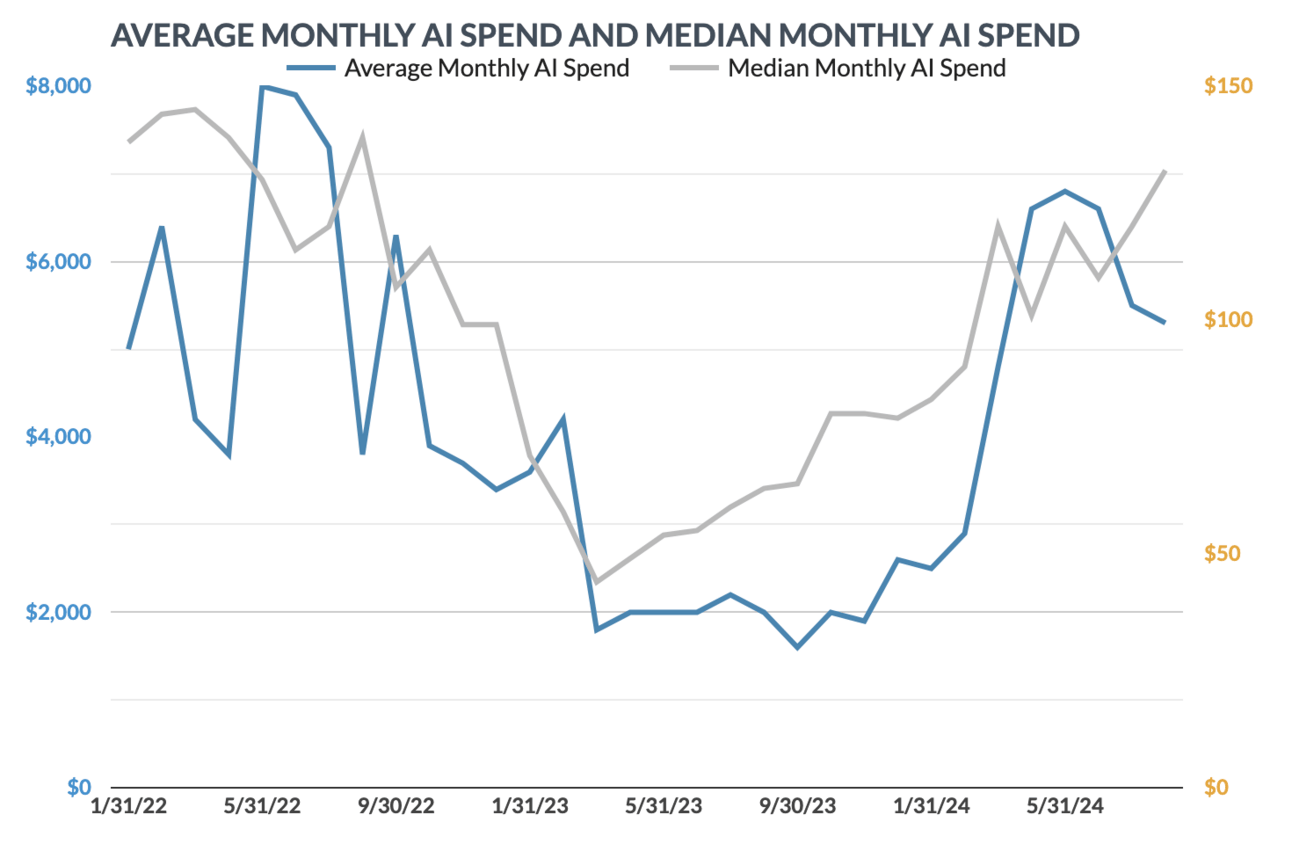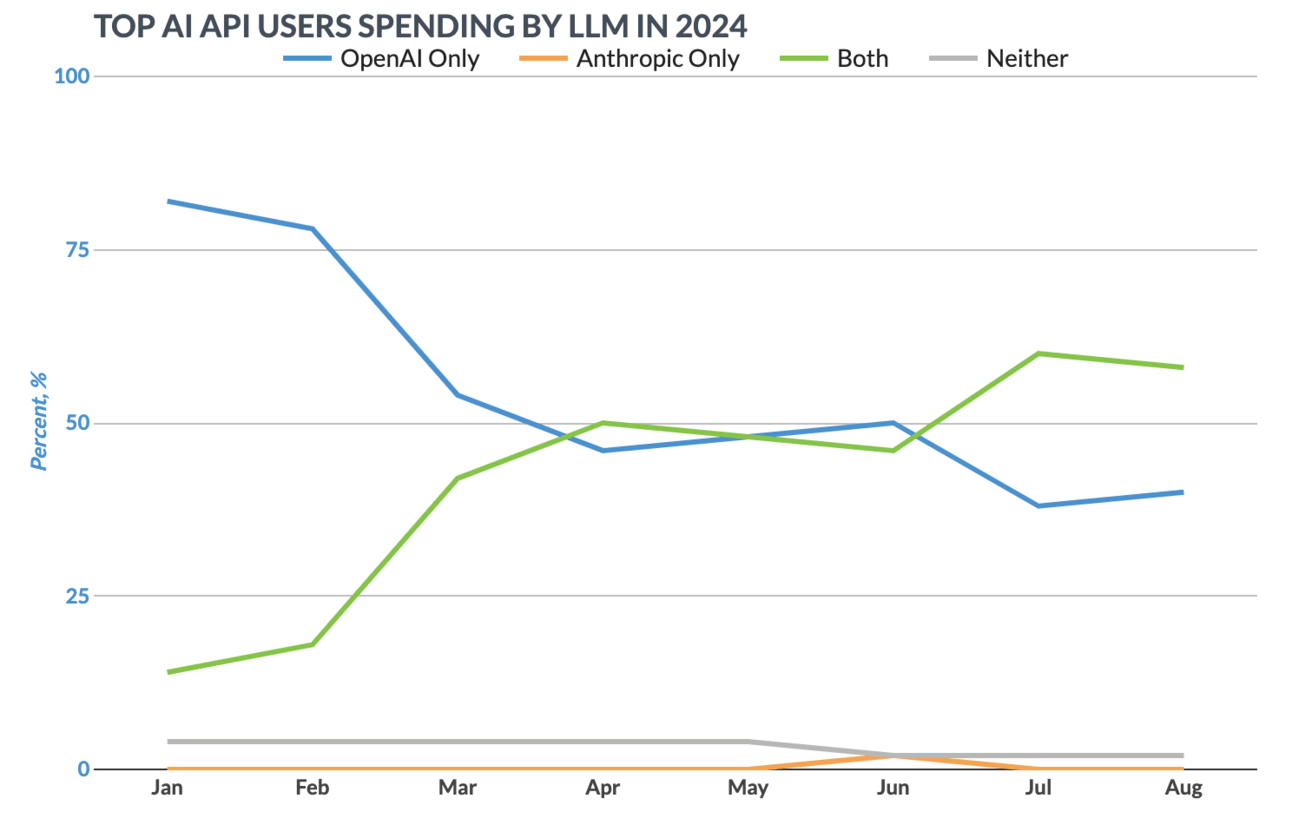- The Technical CEO
- Posts
- The Real Cost of AI in 2025.
The Real Cost of AI in 2025.
PLUS: The Hidden Costs of Free Users.

👋 Another week, another set of insights to help you build smarter, not harder. From copyright updates that protect your innovations to AI models that can supercharge your development, these aren't just updates – they're your blueprint for building more efficient, more intelligent tech.
☕️ Here are this week’s major spills. Let’s dive in:
💨 The Real Costs of Using AI in Your Apps.
💨 Trending: AI Copyright Law & The DeepSeek Market Chaos.
💨 The Hidden Costs of Free Users & the Freemium Model.
☕ The Real Costs of AI in 2025.
The AI Cost Crunch of 2025: Why Your Startup's Bill Can Go Wild.
Here's a wild stat that made me think: startup AI spending just tripled from $2K to $6K monthly. Let's break down what's really going on in 2025.
The Hidden Math Nobody Shows You
Let's break down GPT-4o costs for a "simple" chatbot:
Per Message:
Input (500 tokens): $0.00250/1K × 0.5K = $0.00125
Output (1K tokens): $0.01000/1K × 1K = $0.01000
Total per message: $0.01125
Scale It Up:
Daily (50 messages): $0.01125 × 50 = $0.5625
Monthly: $0.5625 × 30 = $16.88
At 10,000 users: $16.88 × 200 = $3,375/month
Looks rough, right? And that's just for a basic chatbot. Most startups are building way more complex features, which is why we're seeing wild spending patterns in 2024.

Source: Kruz Consulting
Reality check: While average spending hit $6K, most startups hover at $130 monthly. The gap? That's the scaling trap.
The Great Provider Switch
Here's where it gets interesting. By August 2024, 70% of startups were juggling AI providers. Smart founders are treating LLMs like commodities, switching providers within days of price drops.

Source: Kruz Consulting
The shift is clear: OpenAI's dominance is dropping while Anthropic gains ground. By late 2024, over 50% of top startups were using both providers—switching traffic based on price, performance, and reliability.
When To Panic (Actually Don't)
Your AI stack needs a rethink when:
Monthly API bills exceed $2K.
Response times hit 5+ seconds.
Customer demands outpace your current setup.
Tool costs approach infrastructure costs.
The SaaS Warning
SaaS companies are leading AI adoption at 80%. They're also the ones getting burned hardest by scaling costs. Look at the real project costs:
Basic PoC: $30K-60K
MVP: $90K-120K
First Year Total: Often hitting $500K+
👩🏻💻 Pro Tip: Most startups fail by treating AI costs like regular features. They're not. They scale with usage, not users.
The Smart Path Forward
The playbook that's working:
Start with batch processing (50% cheaper)
Cache aggressively (saves 50% on input tokens)
Monitor token usage like server costs
Keep provider relationships loose
Remember: We're all learning to build with AI. But in 2025, the winners aren't the ones with the fanciest AI - they're the ones who made it sustainable. Let's build smart. ❤️
🔍 Weekly Tech Trends That (Actually) Matter
Here are the trending topics we’re looking into this week.
👉 AI and Copyright Law
👉 All the DeepSeek Market Chaos.
Now, let’s dive into the details:
⚖️ AI-Generated Works and Copyright Protection
The U.S. Copyright Office has released a definitive report clarifying the nuanced landscape of AI-generated content and copyright. The report establishes that pure AI outputs cannot receive copyright protection, but works where humans meaningfully contribute using AI as a tool remain eligible for copyright.
The TL;DR: AI-generated content stands outside copyright protection, while human-driven, AI-augmented creative works retain full legal safeguards. This approach balances technological innovation with intellectual property rights.
What to Watch: How industries will interpret and implement these guidelines, and the potential evolution of copyright frameworks as AI technologies continue to advance rapidly.
⚡ DeepSeek's Janus-Pro and Market Dynamics
Chinese AI startup DeepSeek has strategically launched Janus-Pro, an open-source multimodal AI that outperforms leading image generation models like DALL-E 3 and Stable Diffusion. Building on the momentum of their viral R1 launch, the company is challenging established players.
The TL;DR: Janus-Pro represents a significant technical achievement that's reshaping AI image generation capabilities, with potential implications for the global AI competitive landscape. However, the surrounding market speculation may be disproportionate to the actual disruption.
What to Watch: The potential resolution of suspected copyright issues with OpenAI, DeepSeek's ability to sustain its momentum, and how established AI companies will respond to this emerging competitive threat.
🧠 The Hidden Cost of Free Users.
We all love free users. They boost metrics, attract investors, and make our product feel like it’s gaining traction. But here’s the uncomfortable truth: free users aren’t actually free.
The Hidden Costs of Free Users
🔹 Infrastructure Costs: Every free user consumes server space, API calls, and database storage. At scale, even a tiny per-user cost adds up.
🔹 Support Overload: Free users have questions, and they email, chat, and post in forums just like paying ones. Worse, they often take more support time because they’re less technical.
🔹 Spam & Abuse: Free plans attract bots, fake accounts, and abuse. I once saw a competitor’s freemium tool get flooded with scrapers, running up their AWS bill without a single conversion.
🔹 Product Bloat: To satisfy free users, startups often build extra features that don’t actually help revenue growth—wasting valuable engineering time.
🔹 Lower Conversion Than You Think: Industry benchmarks show freemium conversion rates of 1-5%. That means 95% of users may never pay.
So, Should You Ditch Free Users?
Not necessarily. Some of the biggest companies (Slack, Dropbox, Notion) built empires on freemium. But they were strategic:
✅ Limit resource-heavy features (e.g., Notion restricts API access for free plans).
✅ Charge for power users, not casual ones (e.g., Slack locks message history behind a paywall).
✅ Make upgrades feel inevitable (e.g., Zoom’s free tier is great—until that time limit kicks in).
🚀 That's a wrap for this week. Keep building, keep pushing boundaries, and don't settle for the status quo.
Stay sharp, stay curious. See you next week. ✌️